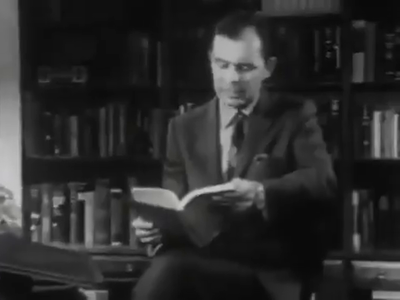Ukrainian Forces Claim Damage to Russian Fighter Jets in Strategic Night Raid
Ukrainian military reports successful nighttime operation targeting Russian air assets amid intensifying conflict.
Ukrainian special forces have reported damaging two fighter jets in a night-time raid on the Savasleyka airfield, located in the Nizhny Novgorod region of Russia, approximately 400 miles from the Ukrainian border.
This operation reportedly comes as Ukraine aims to disrupt Russian military advancements along the frontline.
The general staff of the Ukrainian army announced this development a week after a significant drone strike on Russian bombers, dubbed Operation Spiderweb, which targeted nuclear-capable aircraft.
The recent assault on Savasleyka, cited for housing MiG-31K fighters equipped with Kinzhal ballistic missiles, is part of Ukraine's ongoing strategy to counteract Russian aerial capabilities.
Ukrainian military officials indicated that preliminary assessments suggest two enemy aircraft were hit, likely MiG-31s and Su-30/34 variants.
However, details surrounding the operation and the exact extent of the damage caused remain unclear.
Separately, video footage emerged highlighting a successful Ukrainian drone strike on a factory in Cheboksary, which is situated around 800 miles from the Ukrainian border and is known for producing crucial components for military systems, including self-propelled howitzers and Iskander missile systems.
Ukrainian armed forces confirm that this strike led to the establishment of a large-scale fire at the VNIIR-Progress plant, which is under sanctions imposed by the United States.
The regional governor of Cheboksary stated that while production at the factory has ceased, the strike did not result in any reported casualties.
These military operations coincide with renewed aerial bombardments by Russia, with the Ukrainian air force reporting a record 479 drones launched at various targets in Ukraine during a single night.
This incident sets a record for the largest overnight drone bombardment witnessed since the onset of the conflict.
Russian missile strikes have also reportedly targeted central and western regions, leading to significant military and civilian consequences.
In the aftermath of these hostilities, a prisoner exchange initiative progressed, involving younger and severely injured soldiers from both sides.
The agreement, if fully implemented, could represent the largest exchange of prisoners throughout the conflict, involving 1,200 individuals and the transfer of deceased soldiers' bodies.
In recent developments, the situation in the Sumy region has escalated, with Russian advances reportedly occurring close to the regional capital, though Ukrainian officials have denied claims of a successful incursion into Dnipropetrovsk.
Eastern Ukraine, particularly Donetsk, remains a focal point of contention as fighting continues.
Amid heightened military activity, NATO Secretary General Mark Rutte has indicated that the alliance may agree to increase military spending to 5% of GDP in response to perceived threats from Russia.
In light of these developments, discussions among NATO members are ongoing regarding the need for expanded military capabilities and resources in light of potential future conflicts.
Rutte emphasized the necessity for a substantial increase in air defence systems and artillery stockpiles as part of a rearmament plan to counter an increasingly militarized Russia.
These evolving military dynamics and preparations underscore the extending impact of the conflict on both regional security and global military strategy.
This operation reportedly comes as Ukraine aims to disrupt Russian military advancements along the frontline.
The general staff of the Ukrainian army announced this development a week after a significant drone strike on Russian bombers, dubbed Operation Spiderweb, which targeted nuclear-capable aircraft.
The recent assault on Savasleyka, cited for housing MiG-31K fighters equipped with Kinzhal ballistic missiles, is part of Ukraine's ongoing strategy to counteract Russian aerial capabilities.
Ukrainian military officials indicated that preliminary assessments suggest two enemy aircraft were hit, likely MiG-31s and Su-30/34 variants.
However, details surrounding the operation and the exact extent of the damage caused remain unclear.
Separately, video footage emerged highlighting a successful Ukrainian drone strike on a factory in Cheboksary, which is situated around 800 miles from the Ukrainian border and is known for producing crucial components for military systems, including self-propelled howitzers and Iskander missile systems.
Ukrainian armed forces confirm that this strike led to the establishment of a large-scale fire at the VNIIR-Progress plant, which is under sanctions imposed by the United States.
The regional governor of Cheboksary stated that while production at the factory has ceased, the strike did not result in any reported casualties.
These military operations coincide with renewed aerial bombardments by Russia, with the Ukrainian air force reporting a record 479 drones launched at various targets in Ukraine during a single night.
This incident sets a record for the largest overnight drone bombardment witnessed since the onset of the conflict.
Russian missile strikes have also reportedly targeted central and western regions, leading to significant military and civilian consequences.
In the aftermath of these hostilities, a prisoner exchange initiative progressed, involving younger and severely injured soldiers from both sides.
The agreement, if fully implemented, could represent the largest exchange of prisoners throughout the conflict, involving 1,200 individuals and the transfer of deceased soldiers' bodies.
In recent developments, the situation in the Sumy region has escalated, with Russian advances reportedly occurring close to the regional capital, though Ukrainian officials have denied claims of a successful incursion into Dnipropetrovsk.
Eastern Ukraine, particularly Donetsk, remains a focal point of contention as fighting continues.
Amid heightened military activity, NATO Secretary General Mark Rutte has indicated that the alliance may agree to increase military spending to 5% of GDP in response to perceived threats from Russia.
In light of these developments, discussions among NATO members are ongoing regarding the need for expanded military capabilities and resources in light of potential future conflicts.
Rutte emphasized the necessity for a substantial increase in air defence systems and artillery stockpiles as part of a rearmament plan to counter an increasingly militarized Russia.
These evolving military dynamics and preparations underscore the extending impact of the conflict on both regional security and global military strategy.












